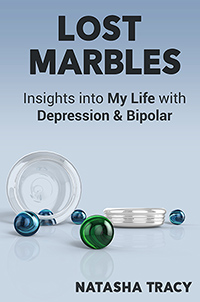Mixed Moods in Bipolar Disorder and Depression in the DSM-V

The Diagnostic and Statistical Manual of Mental Disorders (DSM), the manual that defines all mental illness in the US, is being revised and a new version is due out in 2013. One of the proposed changes to the DSM is to the diagnosis of mixed moods. This change is being proposed by a mood disorders workgroup. It aims to reflect clinical practice where doctors already refer to a “mixed” mood that doesn’t officially meet the DSM criteria. (As I noted, mixed moods are only technically recognized in bipolar type 1.)
Changes to the mixed mood diagnosis will help people with bipolar 1, bipolar 2 and unipolar depression get better treatment.
Changes to Mixed Moods Proposed for the DSM-V
Some of the changes proposed for mixed moods in the DSM include:
- Mixed moods (“with mixed features”) would be a “specifier.”
- The “with mixed features” specifier could be applied to bipolar 1, bipolar 2, bipolar not otherwise specified (now called “not elsewhere defined”) and unipolar depression.
- The predominant mood could be depression, mania or hypomania.
- The secondary mood could be “subclinical” meaning that some aspects of the secondary mood diagnosis would be present but not enough for an official diagnosis.
- For those who meet the diagnosis of both depression and mania together, they would be labeled as having a manic episode with mixed features due to the clinical severity of mania.
 To be diagnosed with the “with mixed features” specifier, a person has to meet the full criteria for one mood (depression, mania or hypomania) and have three or more symptoms of the other mood pole.
To be diagnosed with the “with mixed features” specifier, a person has to meet the full criteria for one mood (depression, mania or hypomania) and have three or more symptoms of the other mood pole.
Symptoms that are common to both mood poles (mania/hypomania and depression) are not included in the possible criteria for a mixed mood, including:
- Distractibility
- Irritability
- Insomnia
- Indecisiveness
Examples of Mixed Features from the DSM-V
I think a couple of examples will make it clear.
Bipolar II with Mixed Features (mixed mood)
Patient A is diagnosed with bipolar II and is found to meet the diagnostic criteria of hypomania, thus hypomania is the primary mood. Nearly every day during the hypomanic episode the patient is also:
- Anhedonic (finds no pleasure in previously enjoyed activities)
- Feels inappropriately guilty
- Has recurrent thoughts of death
Patient A then meets the criteria for bipolar II hypomania with mixed features.
Unipolar Depression with Mixed Features (mixed mood)
One more example:
Patient B is diagnosed with unipolar (that’s non-bipolar) depression and meets the diagnostic criteria for a major depressive episode, depression then being the predominant mood. Nearly every day during this depressive episode the patient also has:
- Inflated self-esteem
- Racing thoughts
- An increase in goal-directed activity
Patient B then meets the criteria for unipolar depression with mixed features.
Why Do We Care About Diagnosing Mixed Moods in Bipolar 1/2 and Depression?
Correctly diagnosing people matters for several reasons. Firstly, mixed moods come with additional risk of suicide and it’s critical to recognize this risk so suicide can be averted. People who get mixed moods will tell you, it can be the scariest mood out there. You feel angry and suicidal and you have too much energy. That energy can easily be translated into things that will kill you.
Also, diagnosing matters for treatment development and insurance coverage. Without a DSM code, the doctor doesn’t have an illness under which to bill. And by not defining mixed states in a way that people actually experience them, you make treatment development impossible. You can’t test a drug on a group of people that doesn’t exist and even if you could find enough people who met the old diagnosis, you would have no idea whether that drug would work on all the people who have subclinical mixed moods, which is most of us.
So, I would suggest the DSM-V changes to the mixed mood specifier are a move in the right direction.
——————————————————————————————————————————
Series on Mixed Moods in Bipolar Disorder
- Mixed moods in bipolar disorder type 1 – as recognized by the DSM
- Mixed moods in bipolar disorder type 2 – although not currently recognized in the DSM, they are studied and seen in practice
- Mixed mood diagnostic revisions in the new DSM
Up next:









You have a very sophisticated blog. It’s a pleasure to read it. Thank you for your post on the possible changes in DSM-V regarding mixed moods. I was keen to read it. Do you mind my asking if your background is in psychiatry/psychology or if you are a fellow bipolar sufferer? Many thanks. Sheila
Hi Sheila,
Thank-you.
Sure you can ask. I have little formal background in psychology, just some post-secondary classes in psychology and psychopharmacology. (I have a bachelor’s of computer science.) I simply have spent the last 10+ years researching the disorder so I’m a bit of an expert.
And yes, I am a bipolar sufferer too.
– Natasha Tracy